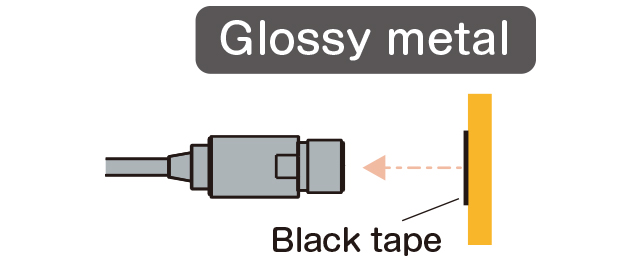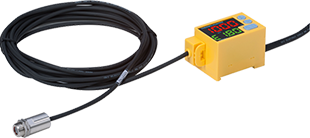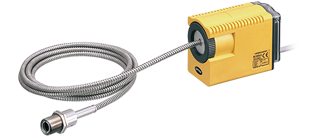02
Non-Contact Thermometer Selection Point 2:The Three Factors of Temperature -
Emissivity, Transmittance, and Reflectance
Emissivity, transmittance, and reflectance are three factors that can affect temperature measurement.
Each of these three factors will differ from one object to the next.
The relationship between the factors is important for selecting a non-contact thermometer.
Each of these three factors will differ from one object to the next.
The relationship between the factors is important for selecting a non-contact thermometer.
Object Emissivity
Emissivity represents the infrared energy emission rate using the range of 0 to 1.
An object’s emissivity is derived based on a perfect black body (emissivity = 1) as a reference. As such, temperature measurements will be more accurate when the emissivity is closer to 1.
An object’s emissivity is derived based on a perfect black body (emissivity = 1) as a reference. As such, temperature measurements will be more accurate when the emissivity is closer to 1.

What is a perfect black body?
Here, a perfect black body refers to an object that completely absorbs all outside light and reflects no light back.
Object Transmittance
Transmittance refers to the ratio of the infrared energy transmitted through an object.
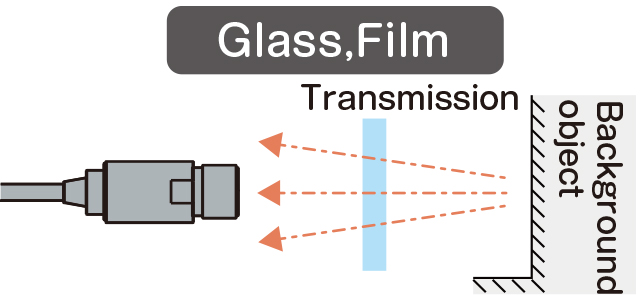
→ Measurement can be affected by the temperature of any object in the background.
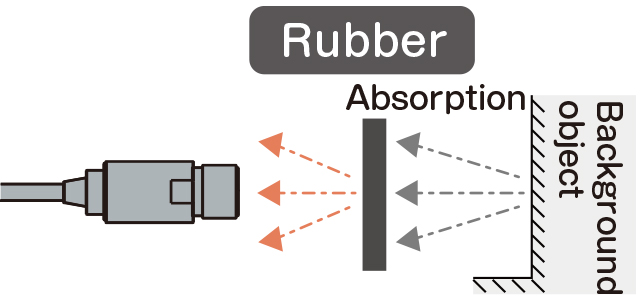
→ Measurement is not likely to be affected by the temperature of an object in the background.
→ Objects with a low transmittance are hardly affected by the temperature of an object in the background, ensuring stable temperature measurements.
Object Reflectance
Reflectance refers to the ratio of the infrared energy reflected by an object.
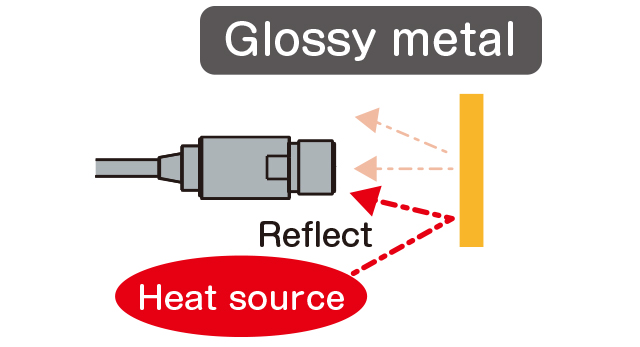
→ Measurement can be easily affected by nearby heat sources.
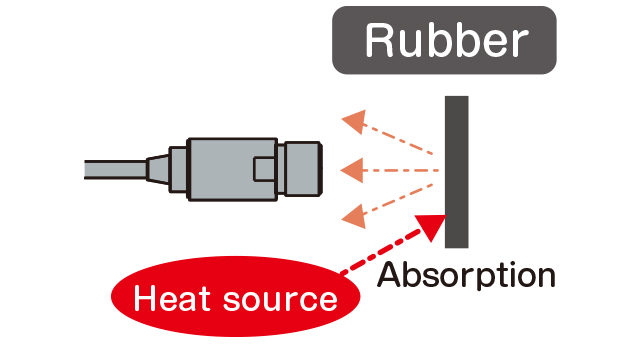
→ Measurement is not likely to be affected by nearby heat sources.
→ Objects with a low reflectance are hardly affected by nearby heat sources, ensuring stable temperature measurements.
Relationship between Emissivity, Transmittance, and Reflectance
These three factors should all add up to 1 (Emissivity + Transmittance + Reflectance).
In other words, if an object has a high emissivity, the transmittance and reflectance will be low, resulting in less likelihood of being affected by temperatures of nearby objects.
In other words, if an object has a high emissivity, the transmittance and reflectance will be low, resulting in less likelihood of being affected by temperatures of nearby objects.
〈Example with high transmittance and high reflectance〉
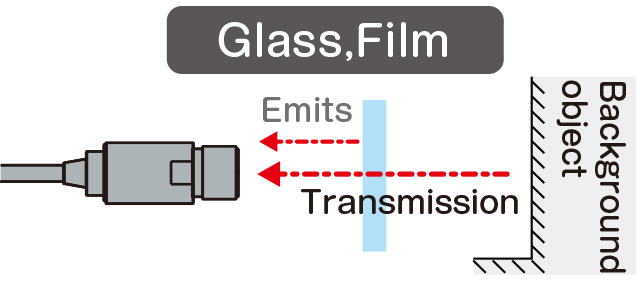
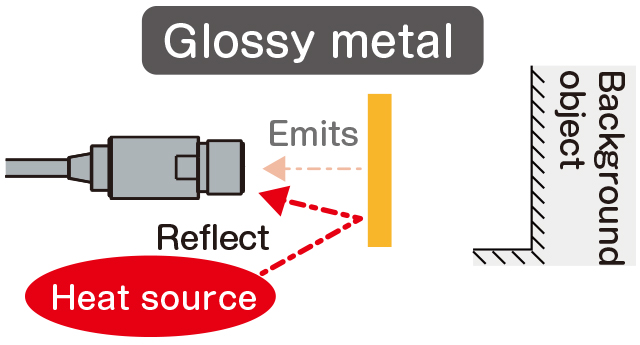
Objects with a high transmittance and high reflectance will be affected by the temperatures of nearby objects.
→ Use of a non-contact thermometer that is not easily influenced by the temperatures of nearby objects (special wavelength thermometer) is recommended.
→ Use of a non-contact thermometer that is not easily influenced by the temperatures of nearby objects (special wavelength thermometer) is recommended.
*Products are introduced below.
〈Example with high emissivity〉
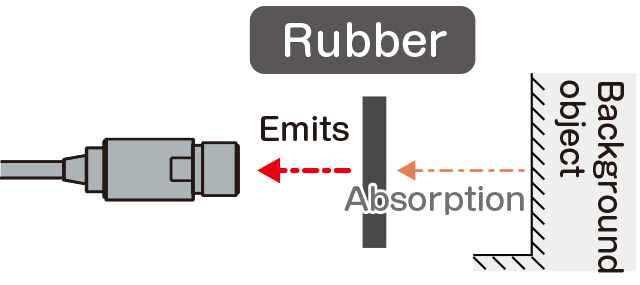
Objects with a high emissivity can be measured with high accuracy.
→ Use of a general-purpose non-contact thermometer is recommended.
→ Use of a general-purpose non-contact thermometer is recommended.
*Products are introduced below.
Measurement Methods for Workpieces Not Easily Measured with General-Purpose Thermometers (Glass, Film, Metal, etc.)
1. Measurement using dedicated thermometers
Using a non-contact thermometer with a measurement wavelength suitable for a specific material allows for high-accuracy direct temperature measurements.
*The displayed temperature may be affected by the measurement conditions and the environment.
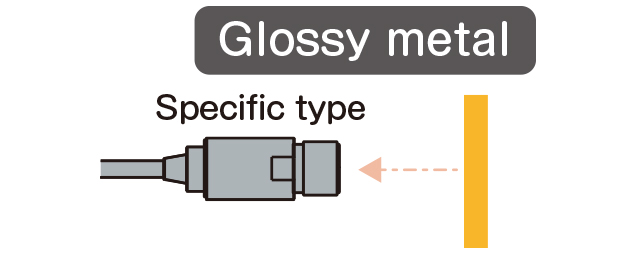
2. Measurement using black tape and general-purpose thermometers
Applying black tape to the surface of a measurement target allows for temperature measurement of various materials using only one thermometer.
However, because the black tape is heat-resistant only up to 250°C, it cannot be used for measurement of temperatures above 250°C.
In such cases, heat-resistant paint and other solutions can be used instead.
However, because the black tape is heat-resistant only up to 250°C, it cannot be used for measurement of temperatures above 250°C.
In such cases, heat-resistant paint and other solutions can be used instead.
